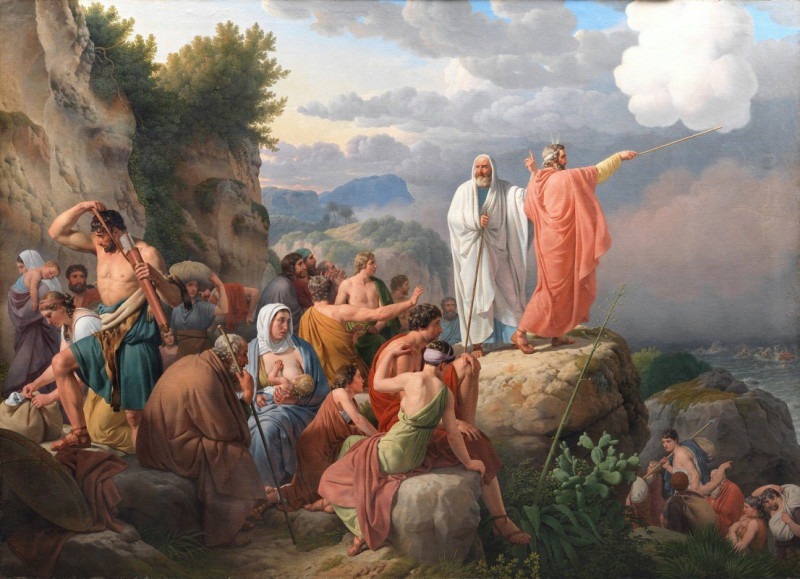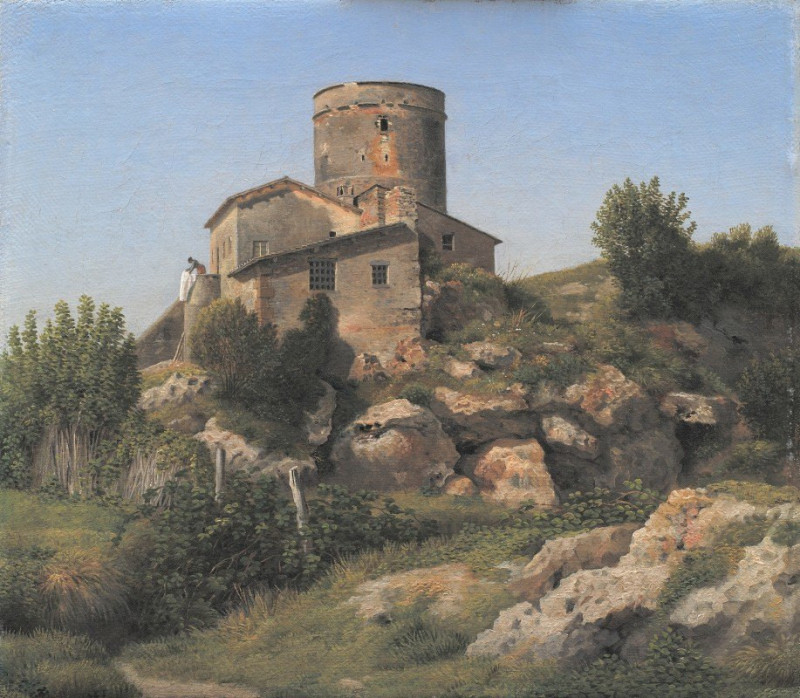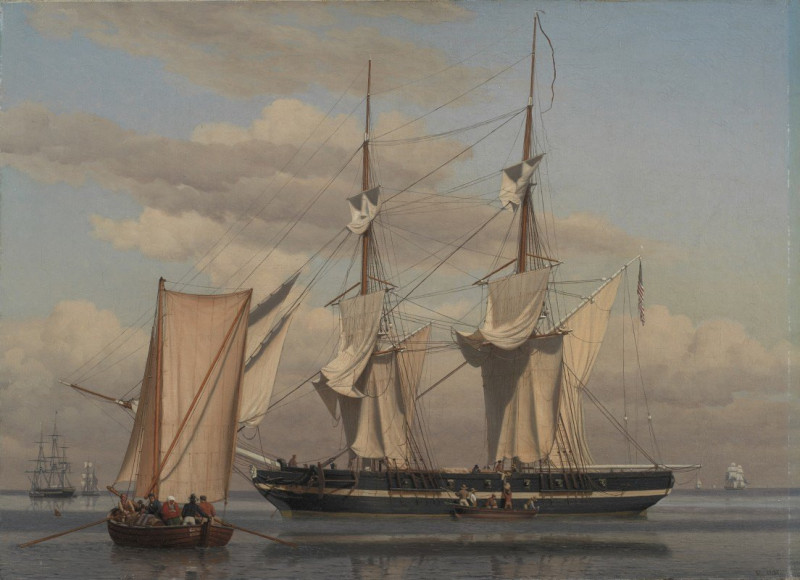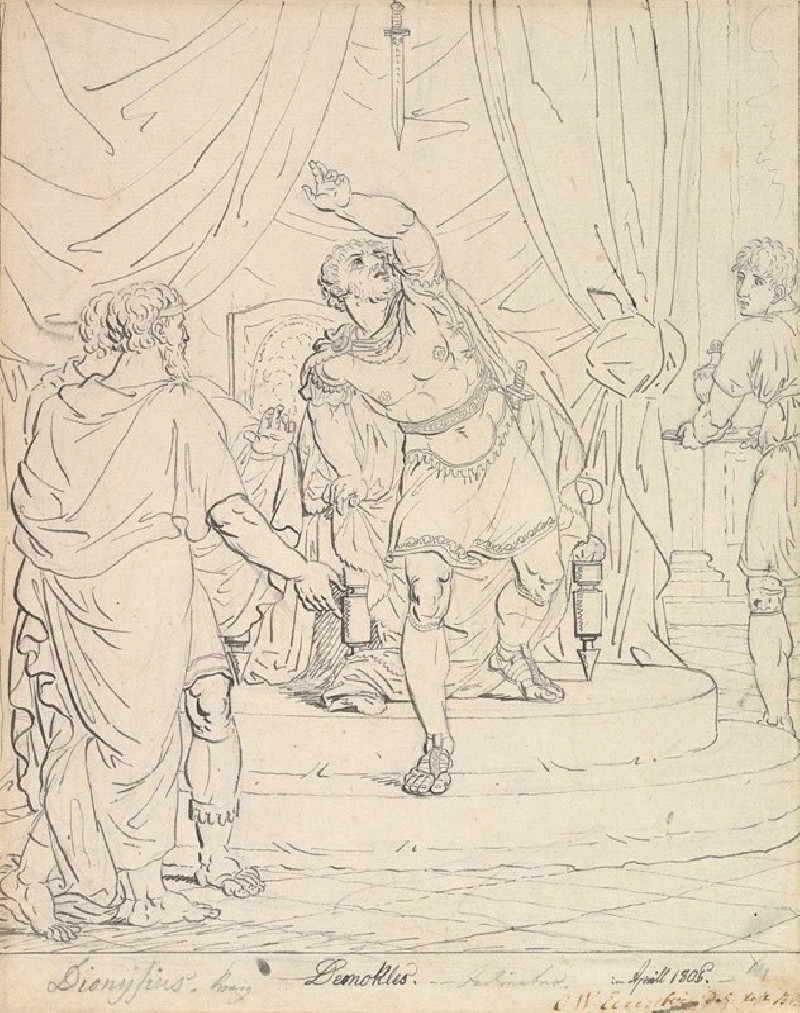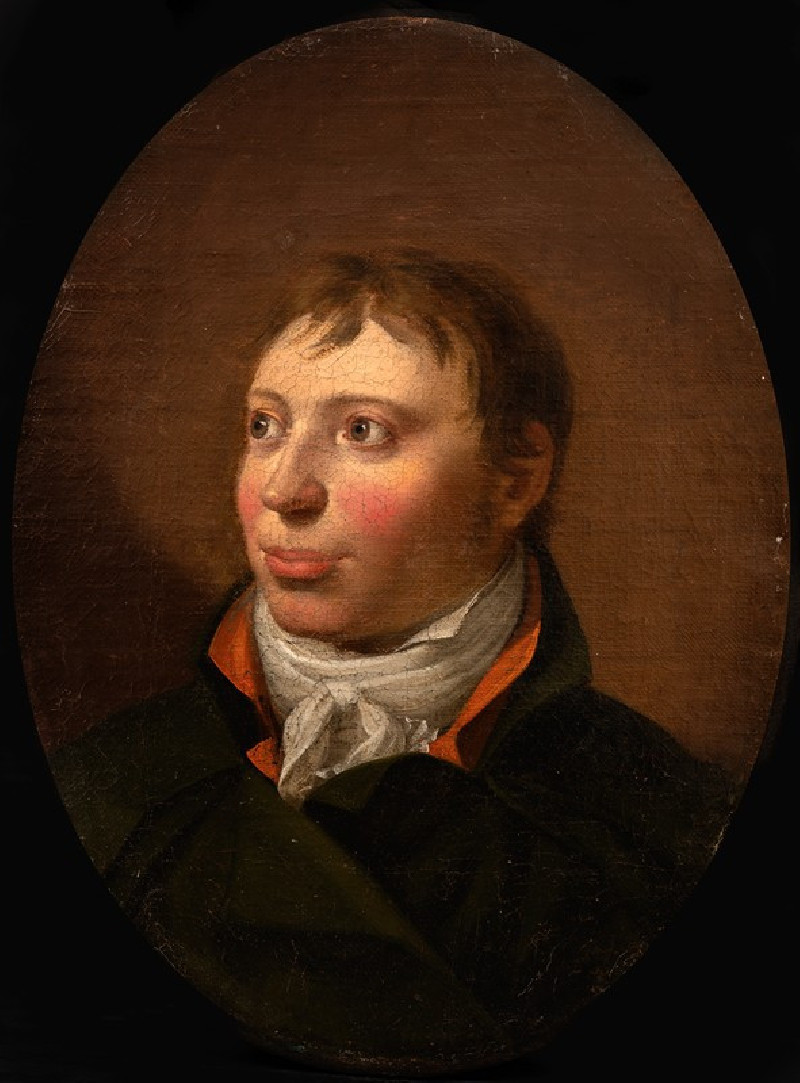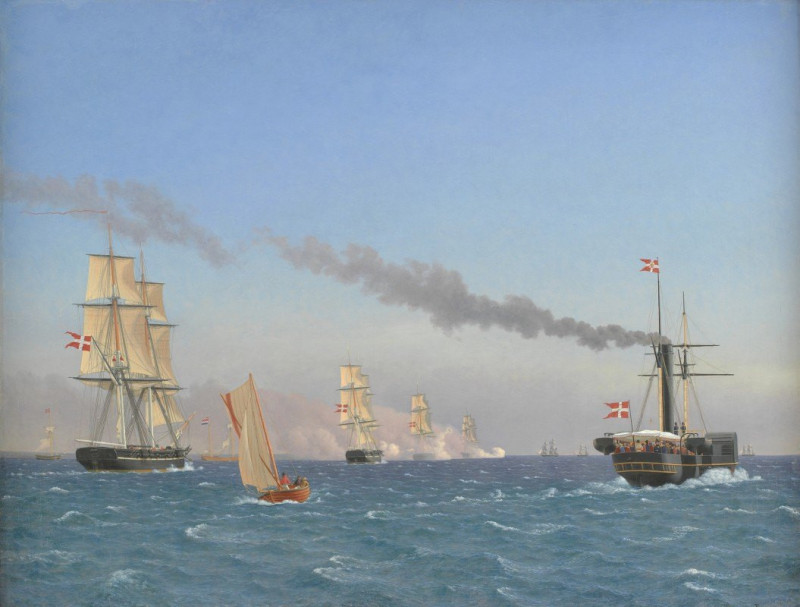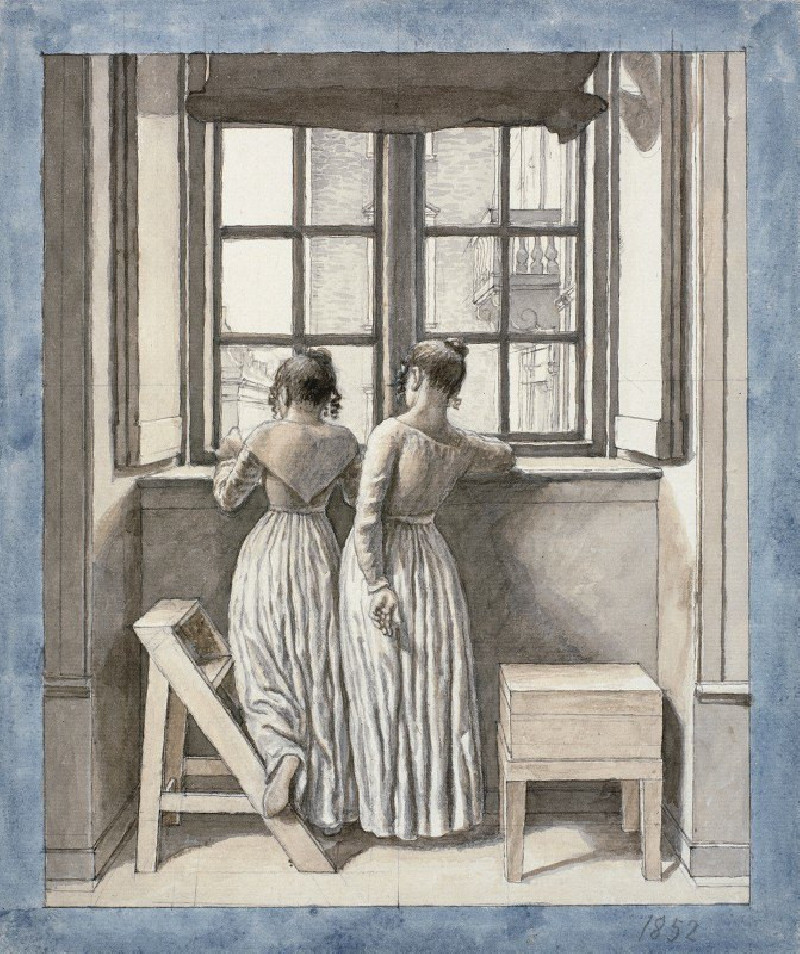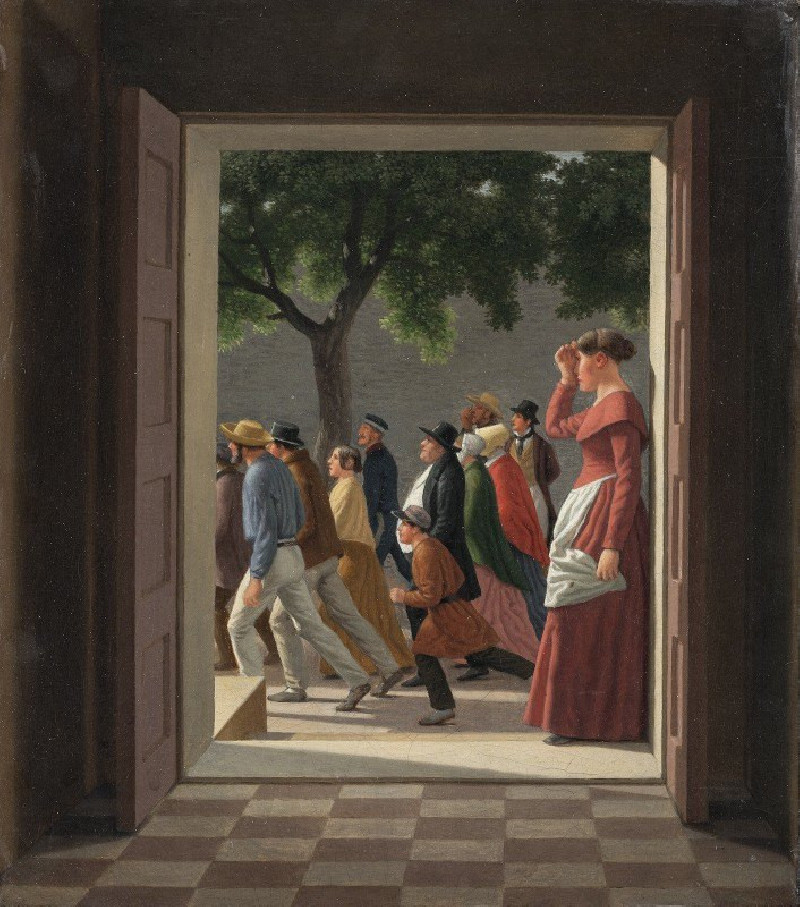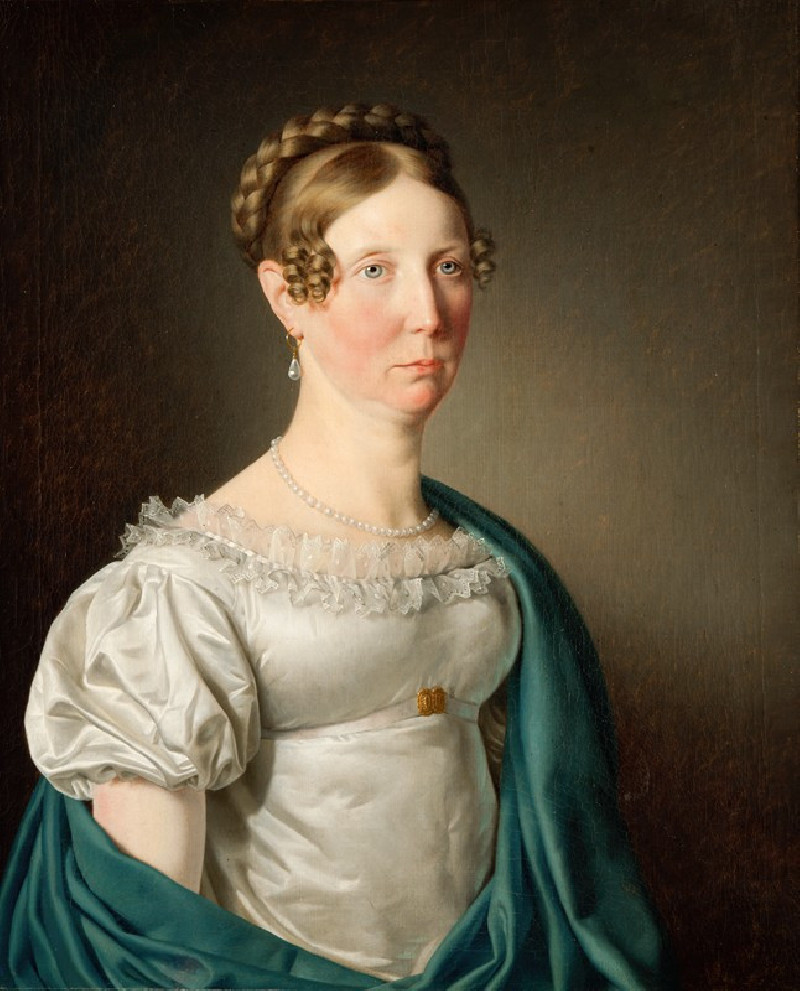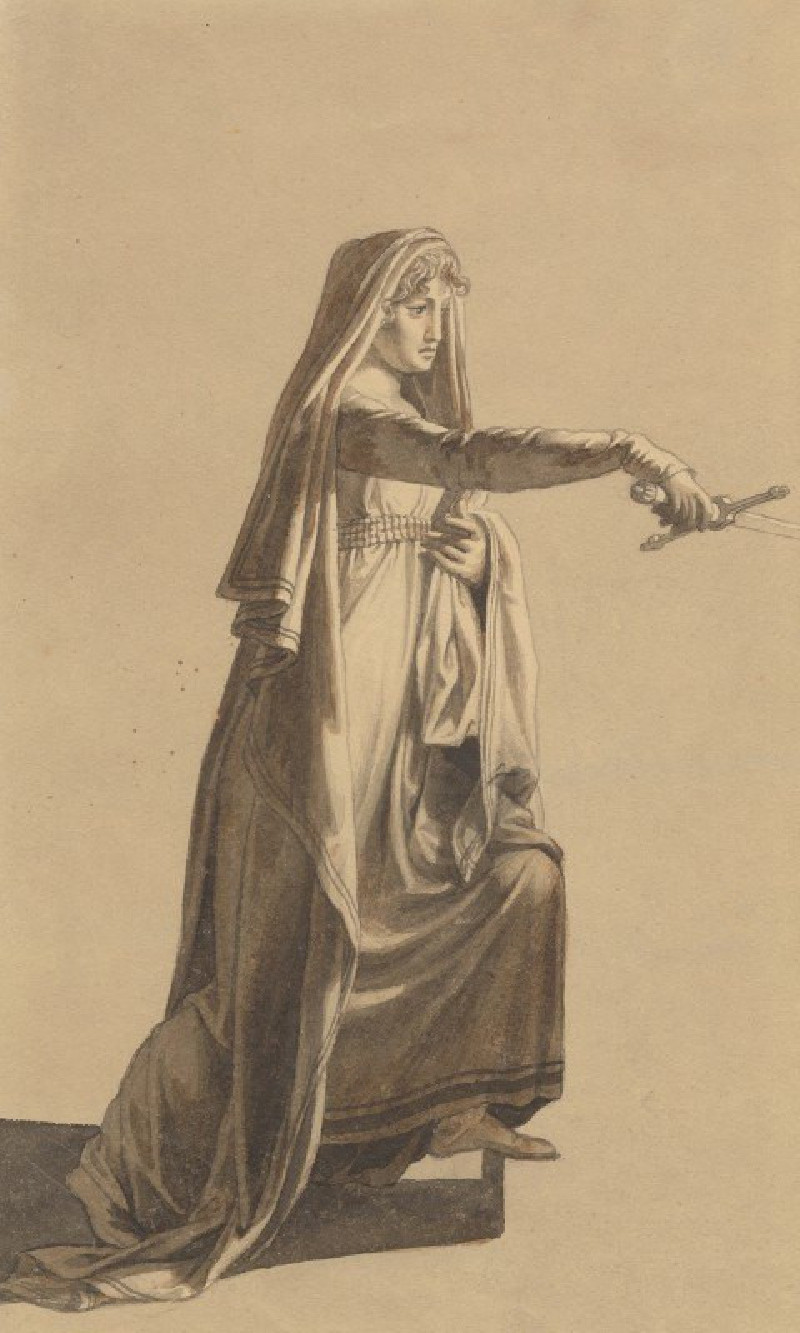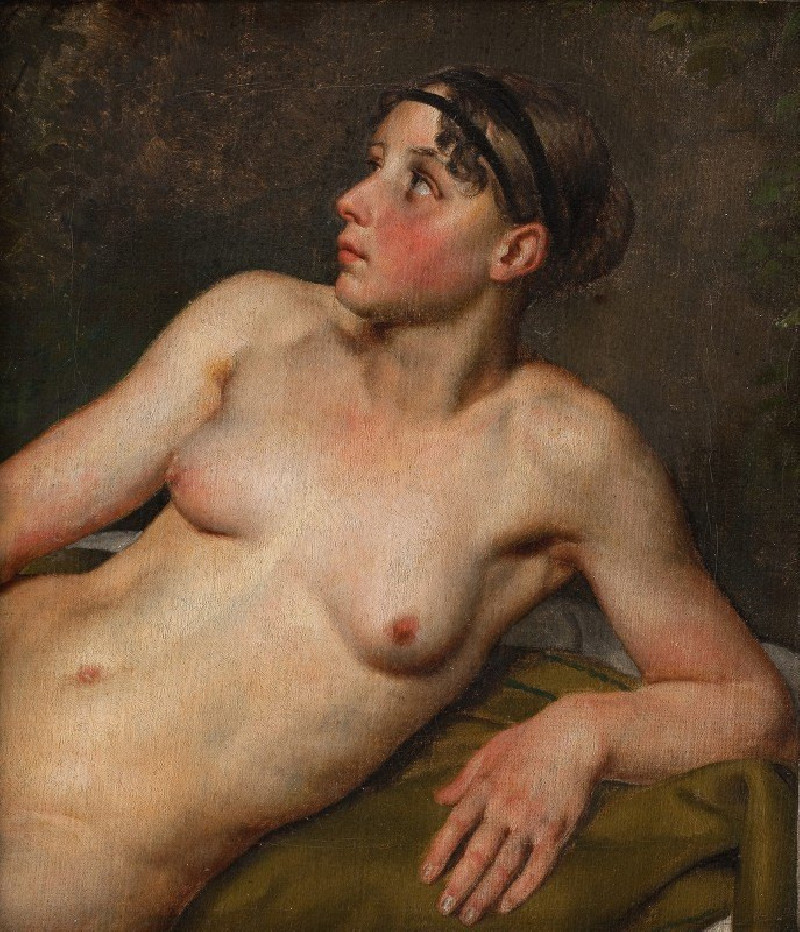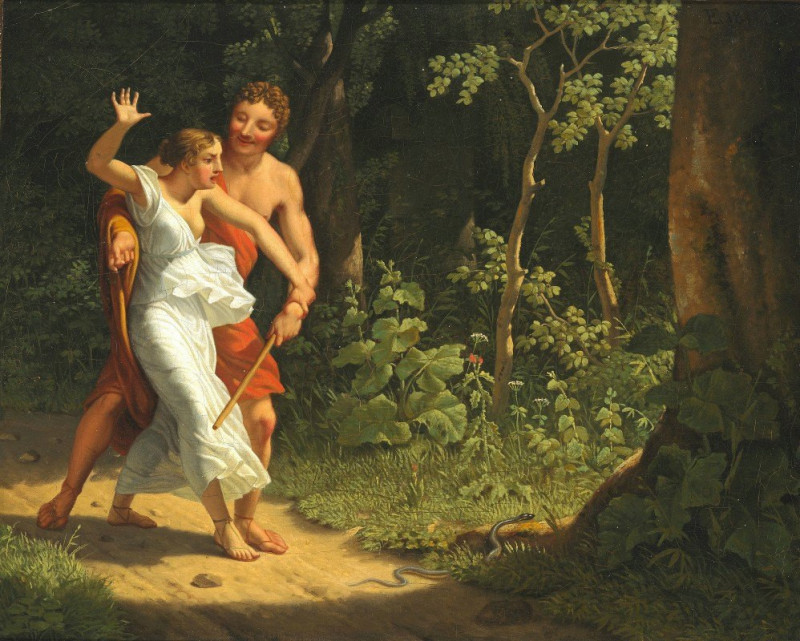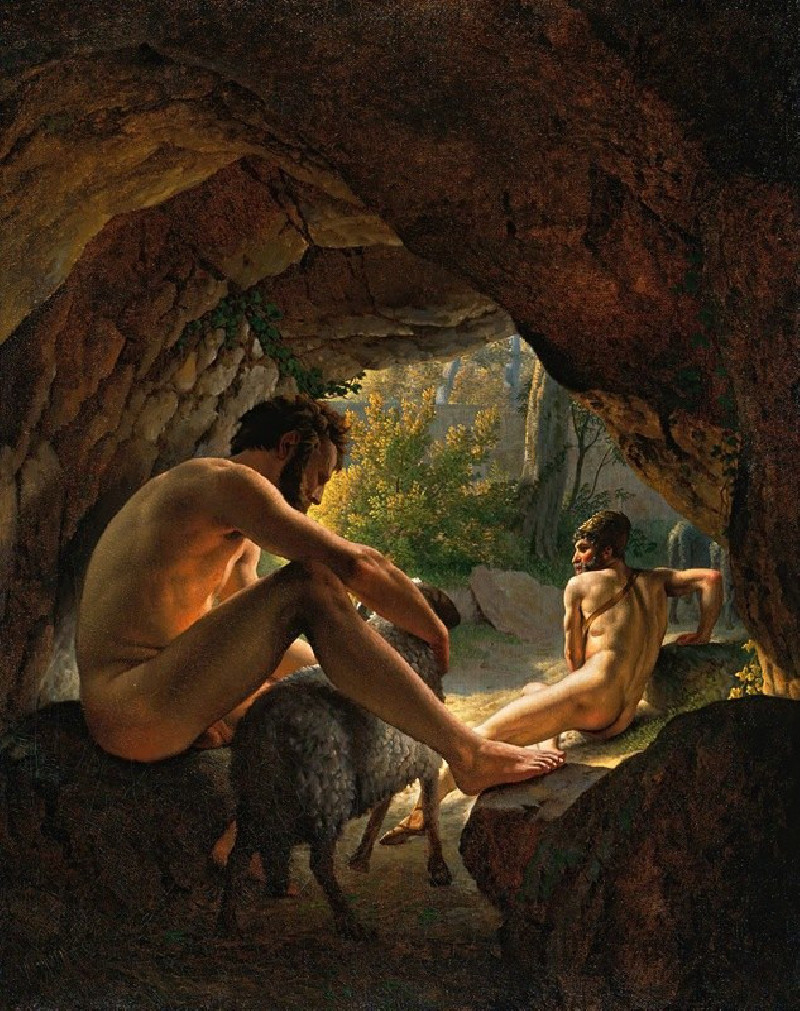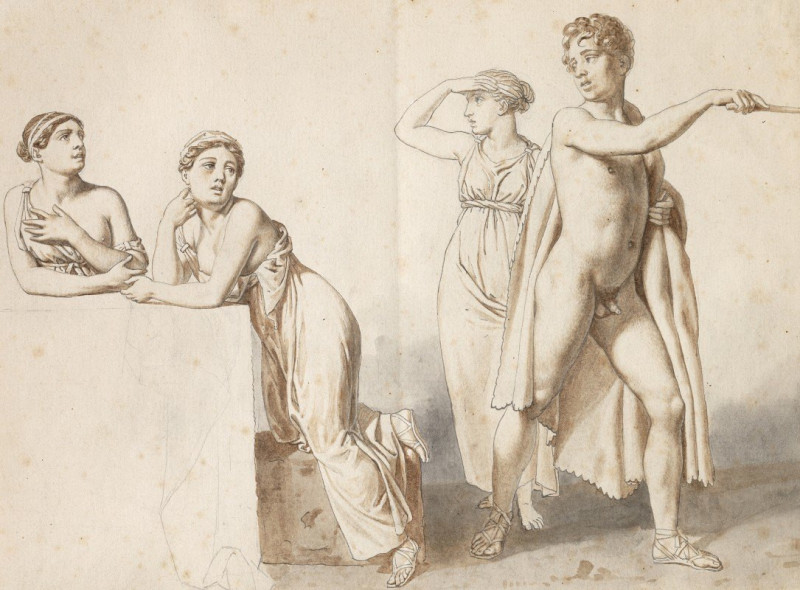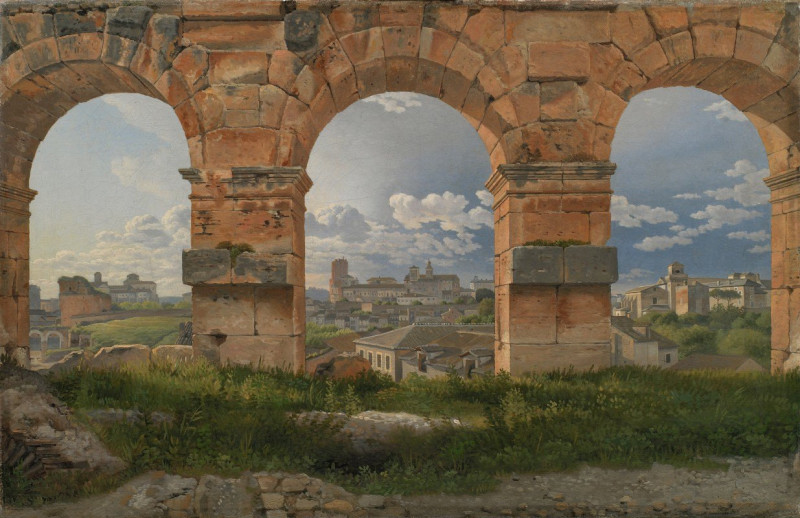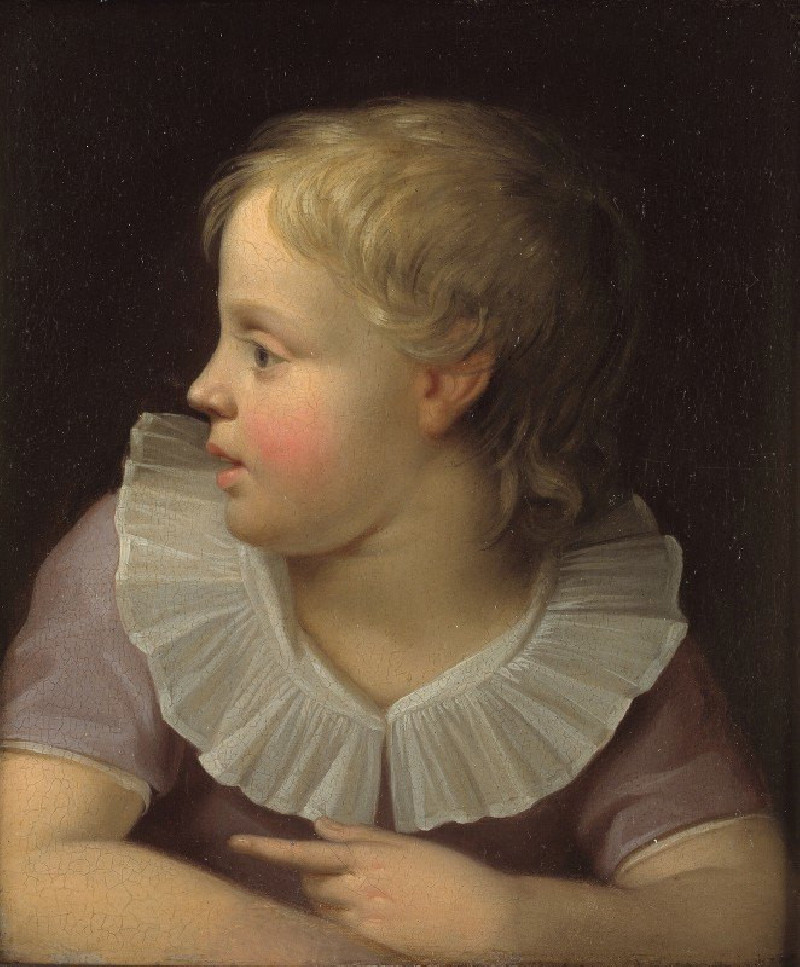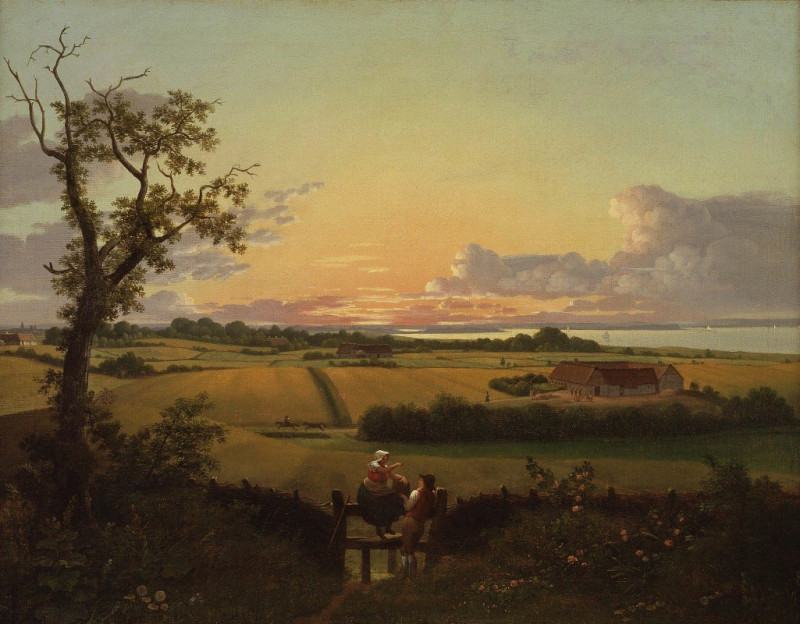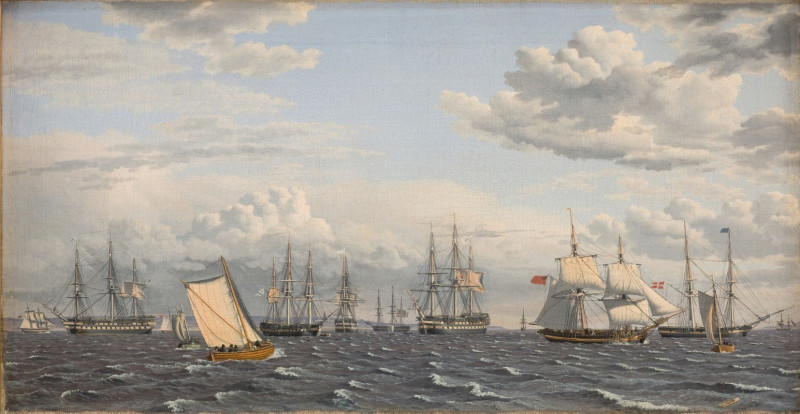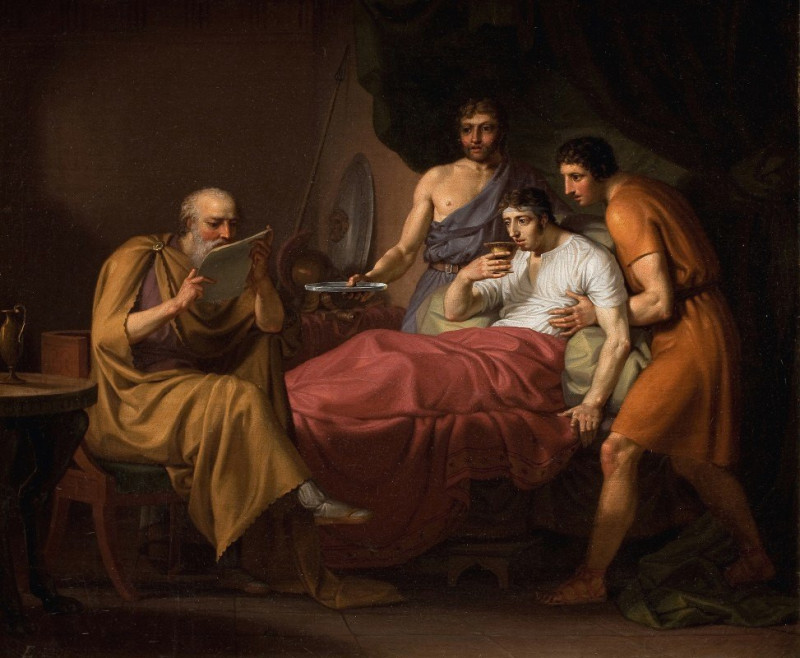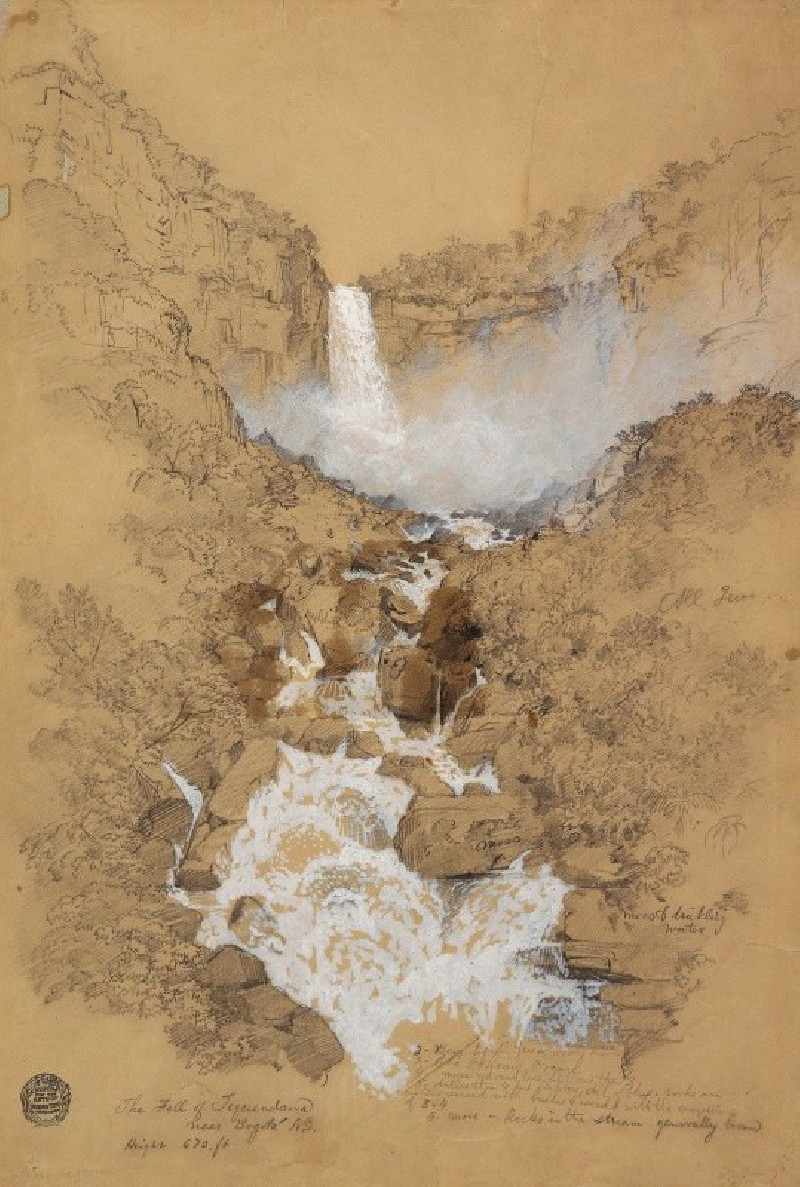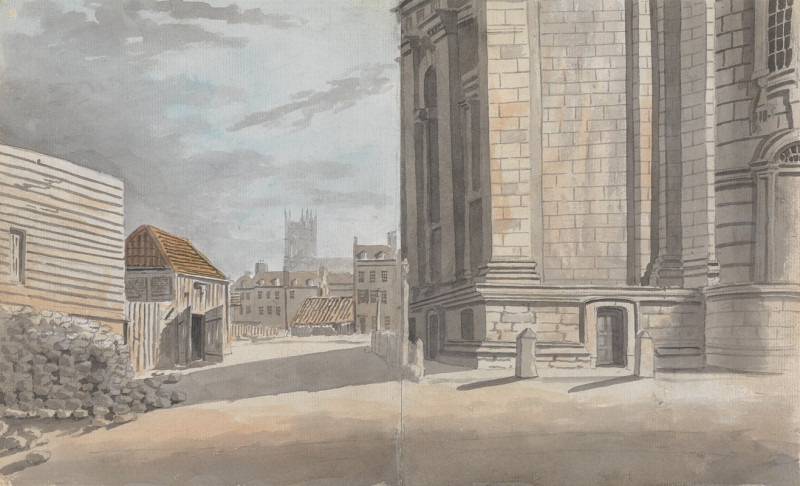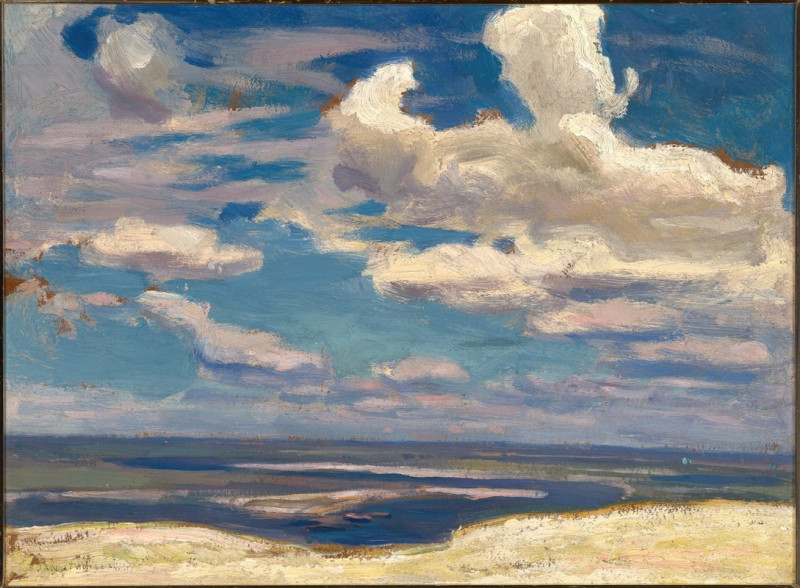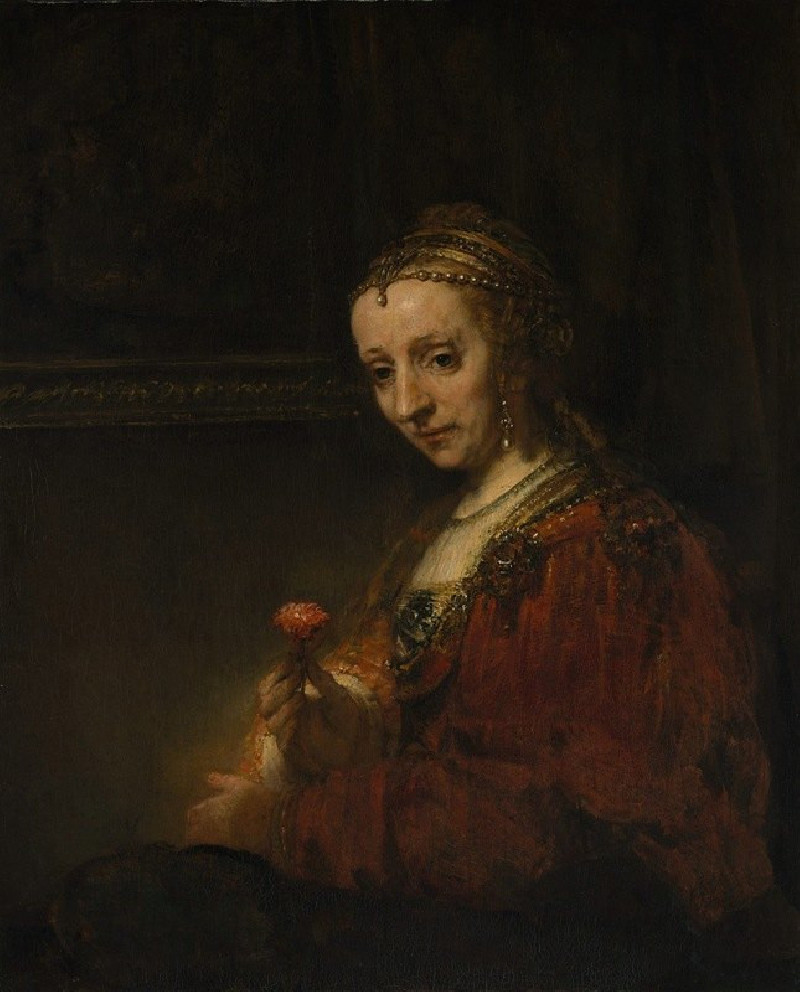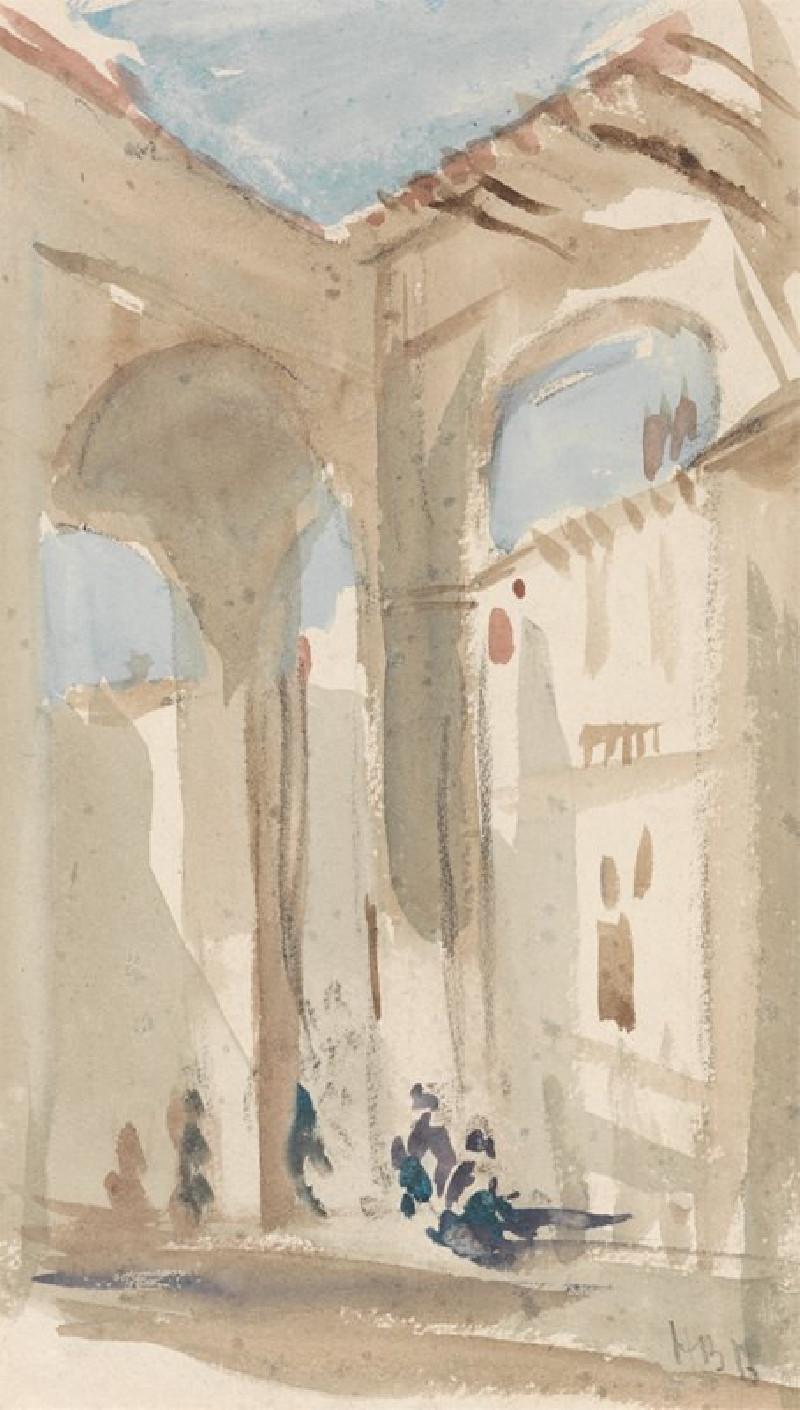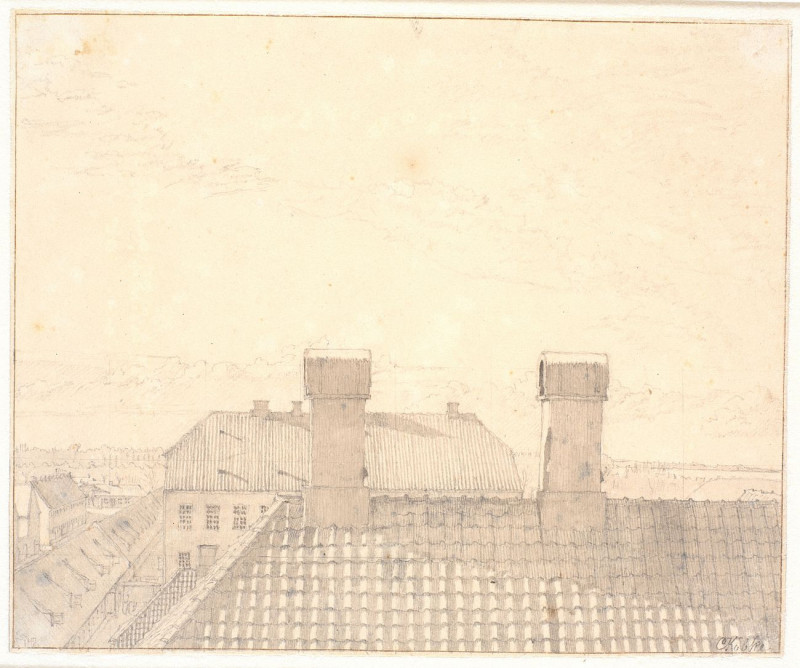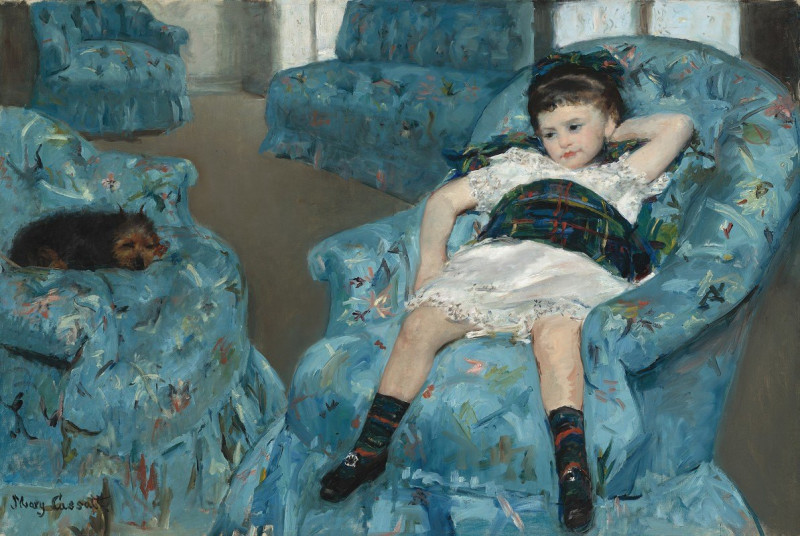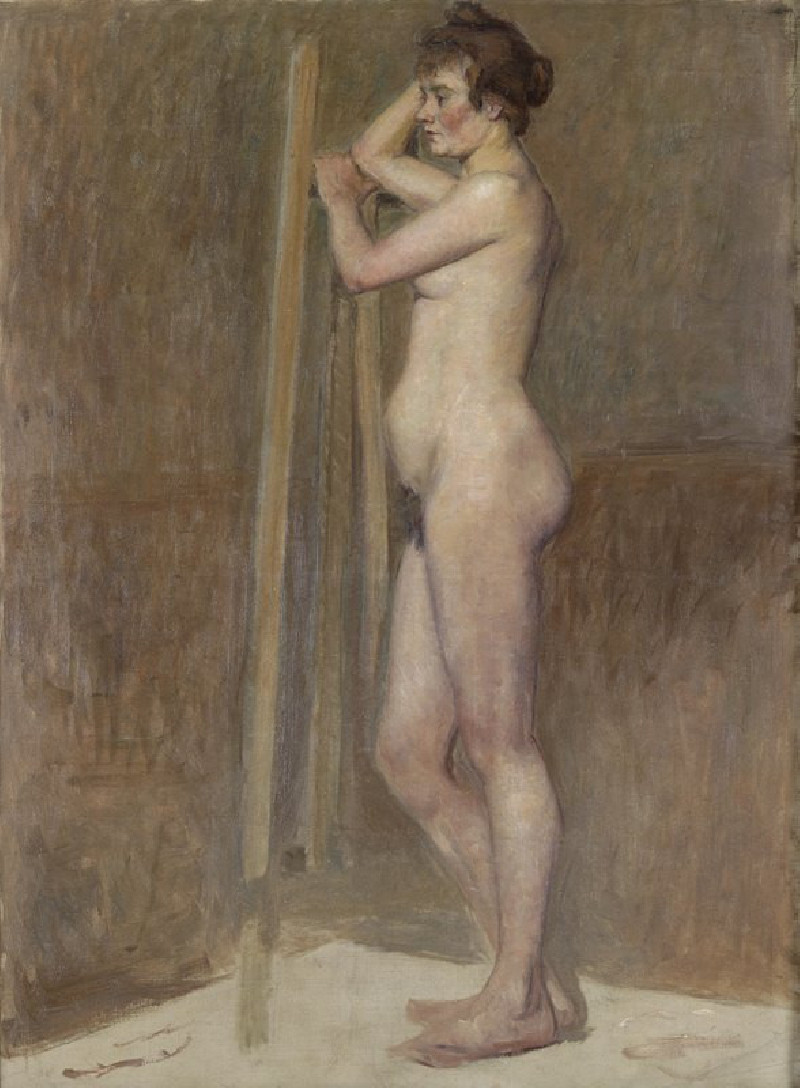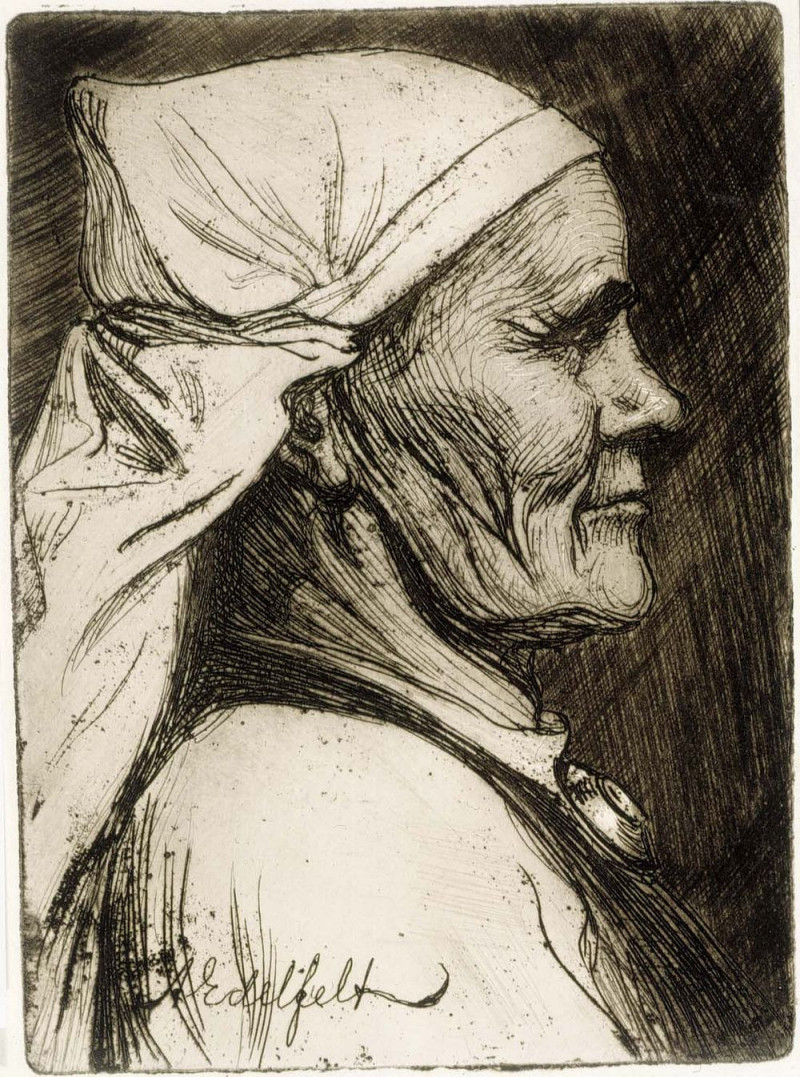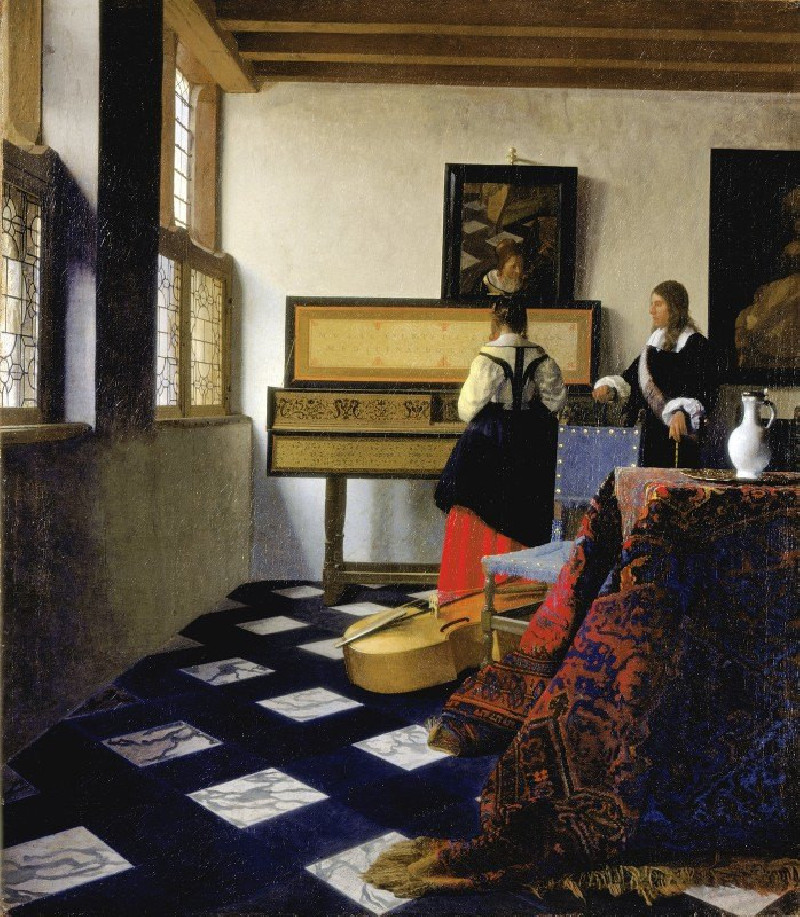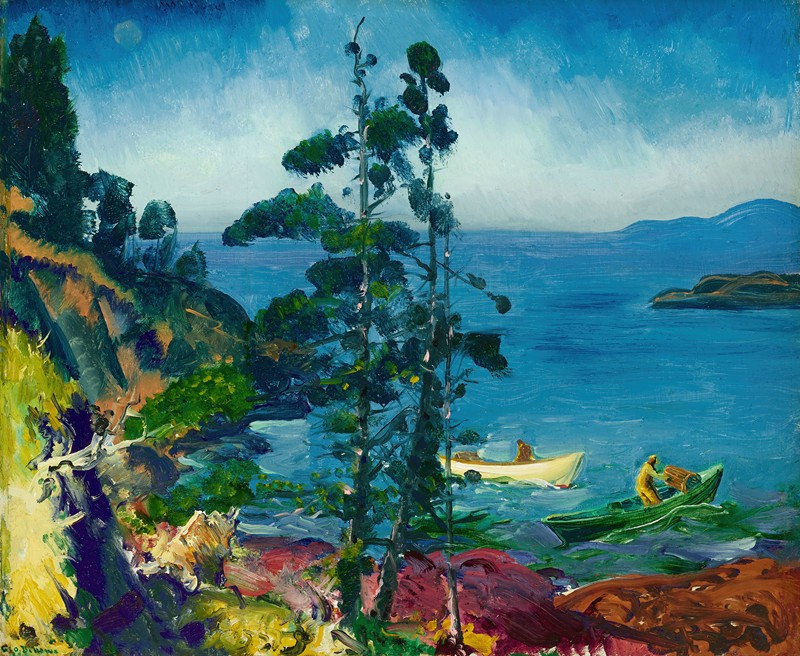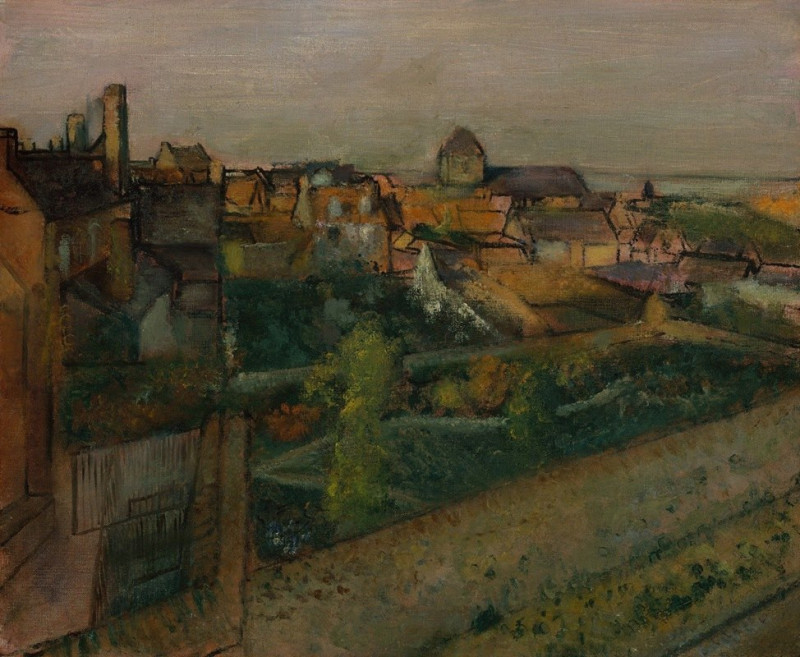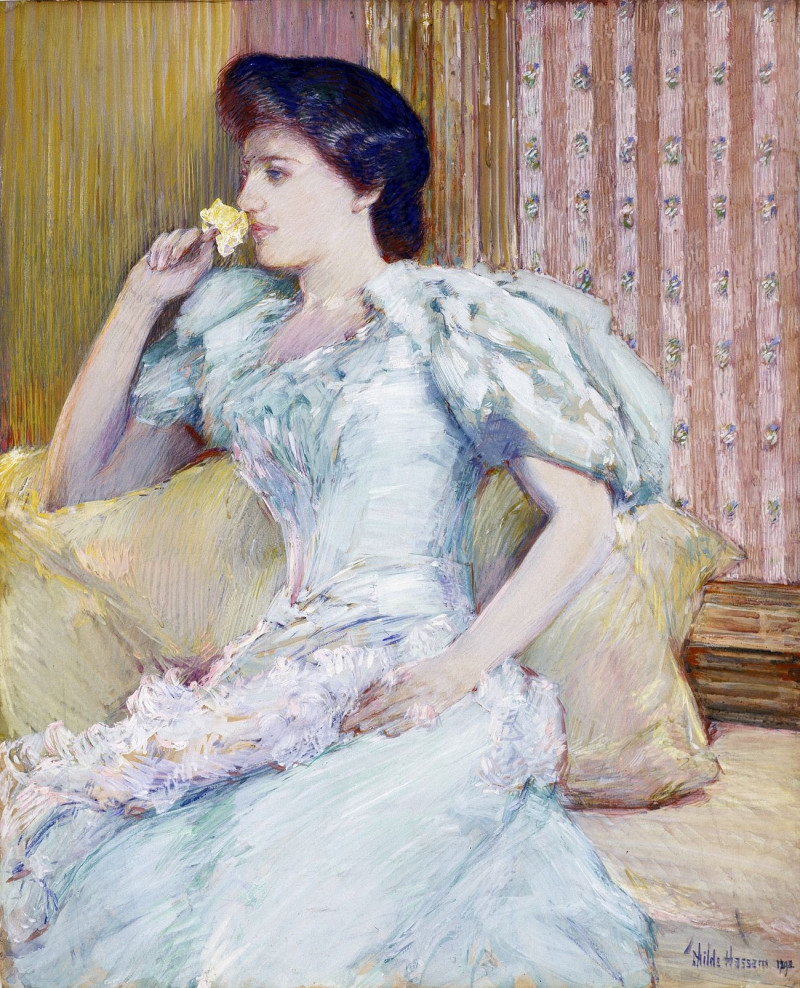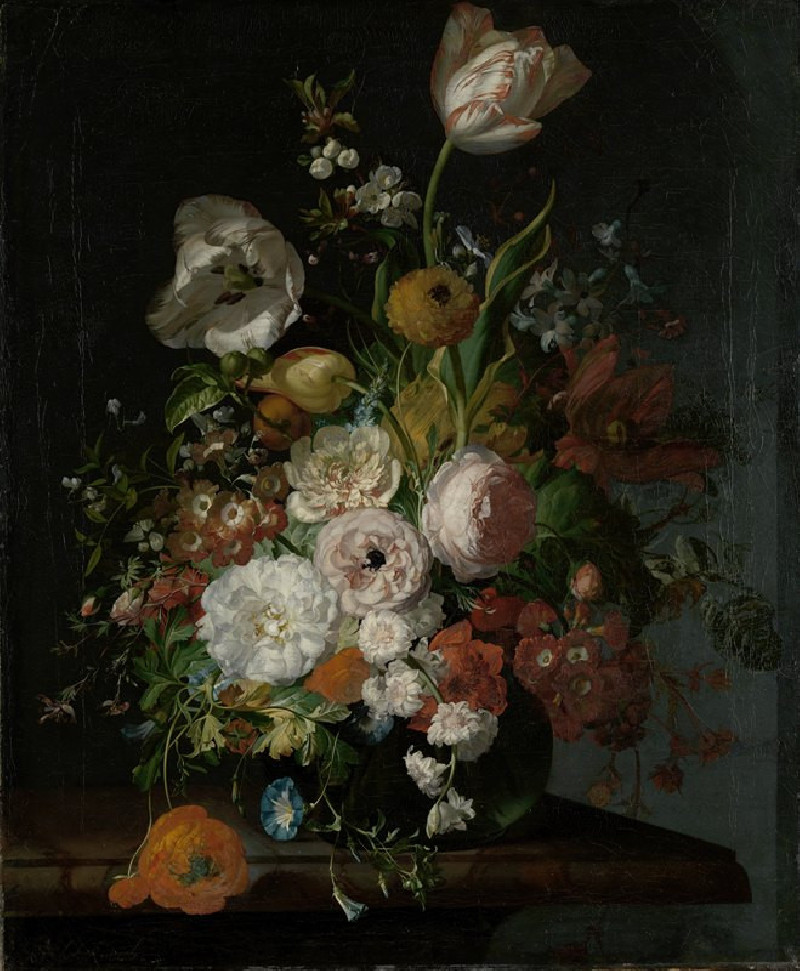The Devil’s Cleft at Liselund Manor. The Island of Møn (1809)
Technique: Giclée quality print
Recommended by our customers
More about this artwork
Welcome to the detailed overview of the 1809 painting "The Devil’s Cleft at Liselund Manor. The Island of Møn" by the esteemed Danish artist, Christoffer Wilhelm Eckersberg. This captivating landscape painting encapsulates the picturesque and tranquil essence captured by Eckersberg during his time on the island of Møn, Denmark.In the foreground, three figures—a man in black attire and two women dressed in flowing gowns—are depicted engaging in a leisurely stroll along a winding path that leads through a rich, verdant valley. The presence of these figures adds a human touch to the otherwise wild and untamed natural scenery, suggesting a moment of leisure and harmony with nature. The path, enveloped by towering trees and lush greenery, directs our eye deeper into the landscape, enhancing the depth and perspective of the painting.The terrain rises steeply on the right, where the shadowy faces of cliffs partially obscured by foliage add a touch of dramatic contrast to the otherwise soft and harmonious composition. Meanwhile, the left side opens up to a brighter, more open landscape, symbolizing perhaps the broader vistas that await those who wander through nature’s paths.A notable feature of this painting is the “Devil’s Cleft,” a dark, narrow chasm within the cliff that adds a mysterious, almost mystical element to the scene. It invokes curiosity and wonder about the legends that might have inspired such a name, blending local folklore with the natural beauty of the landscape.Eckersberg's meticulous attention to detail and his mastery in capturing the light filtering through the leaves, illuminating parts of the path and characters, showcases his profound skill in landscape painting.
Delivery
Returns
Christoffer Wilhelm Eckersberg (2 January 1783 – 22 July 1853) was a Danish painter. He went on to lay the foundation for the period of art known as the Golden Age of Danish Painting, and is referred to as the "Father of Danish painting".


